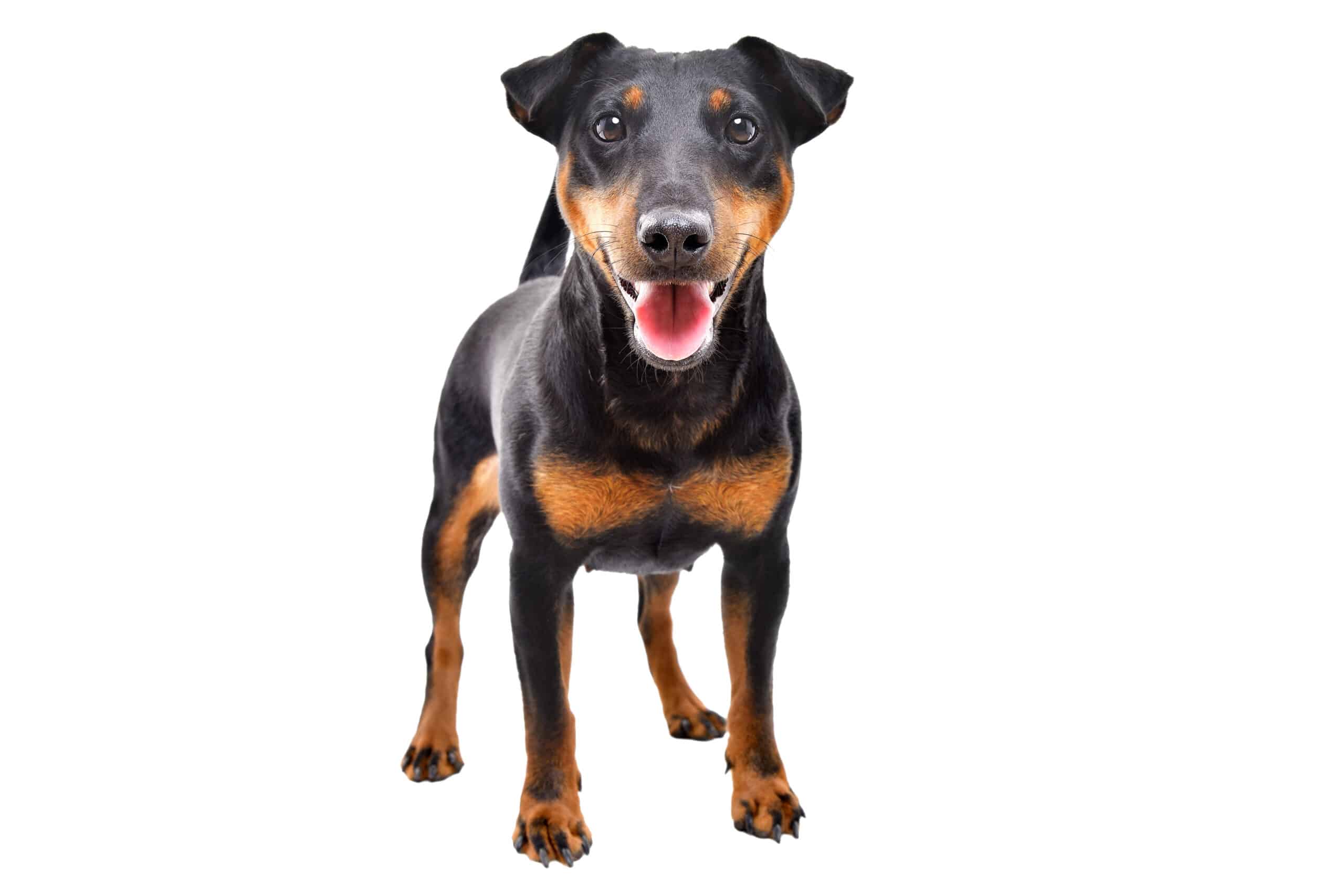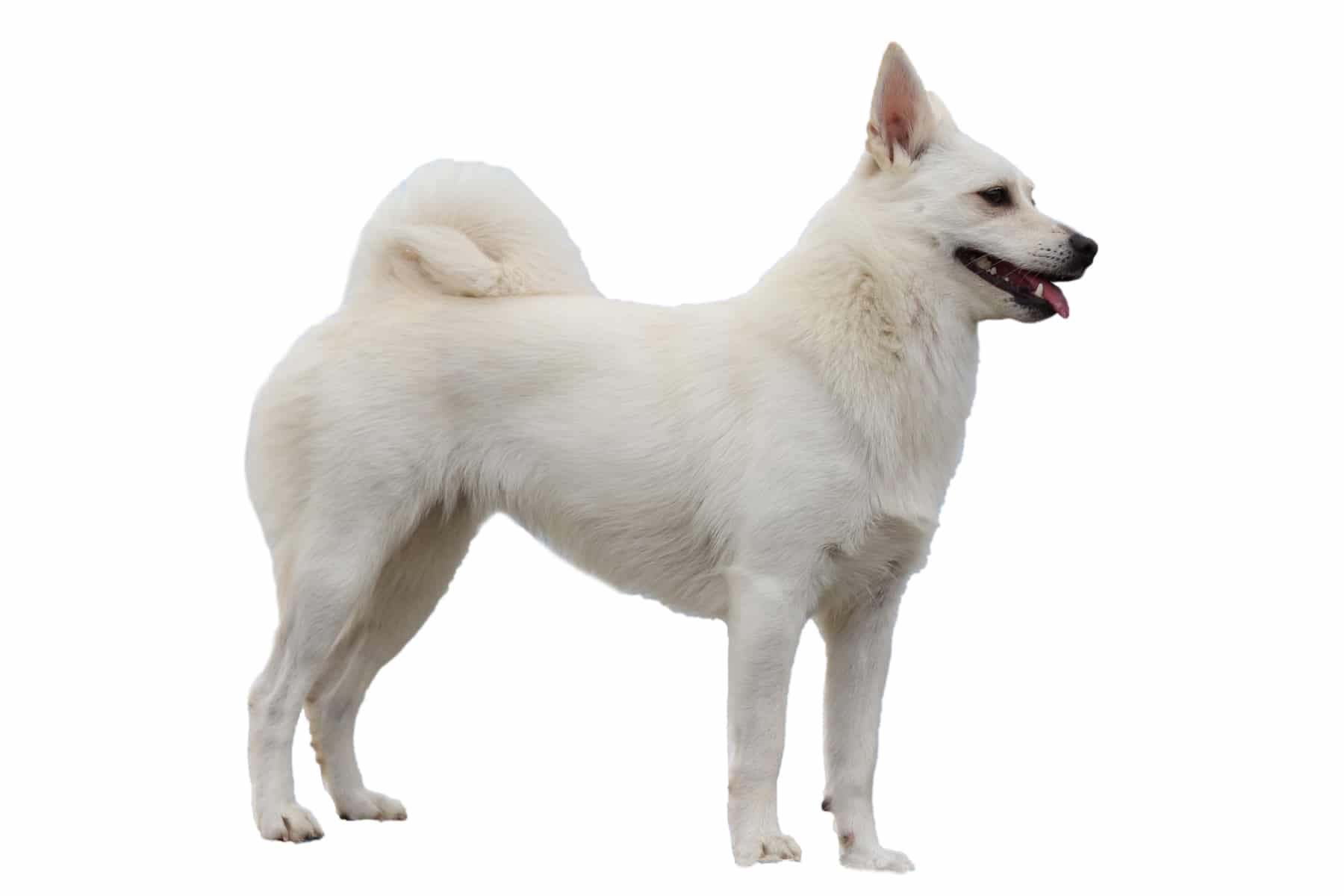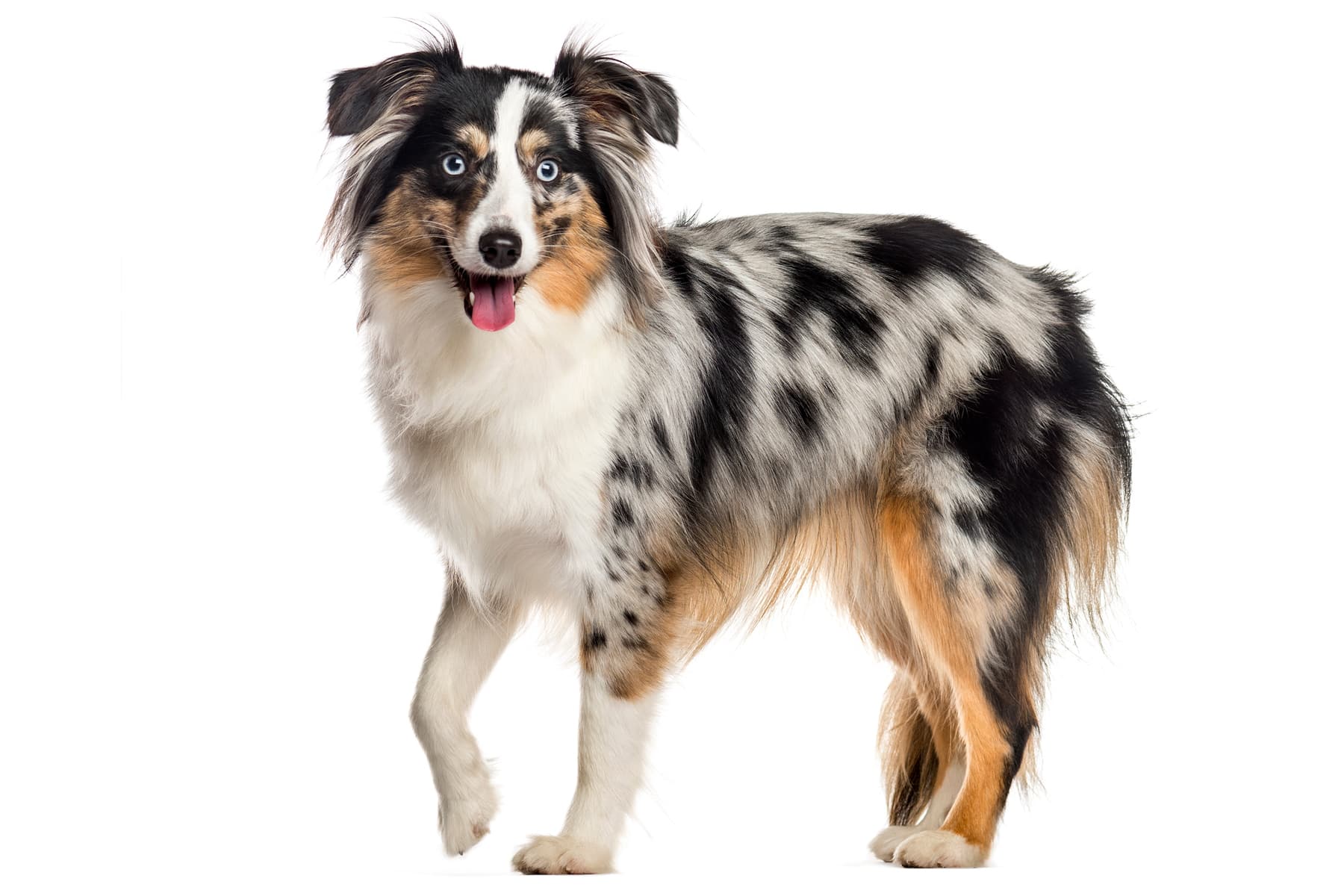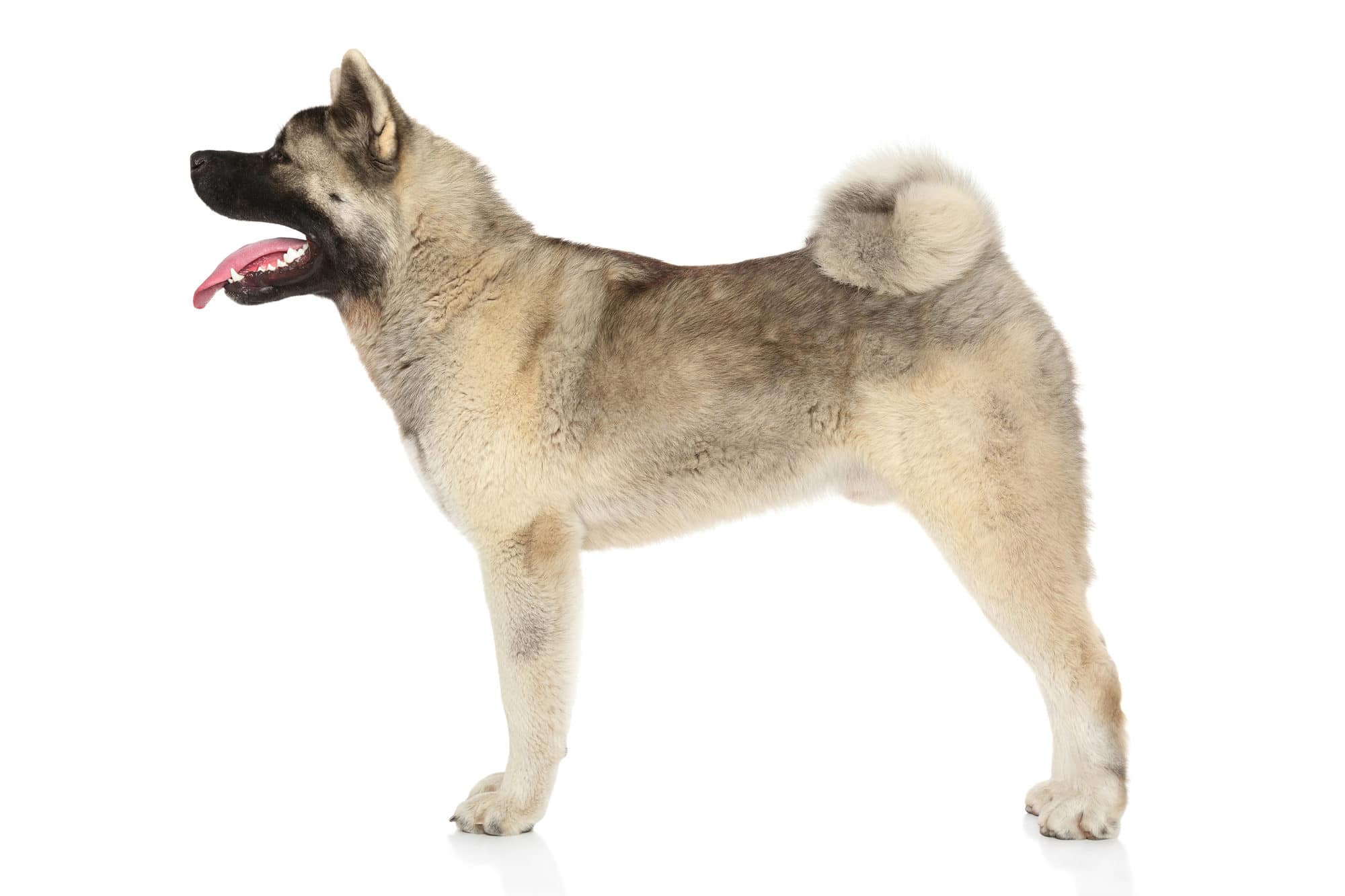Komondor
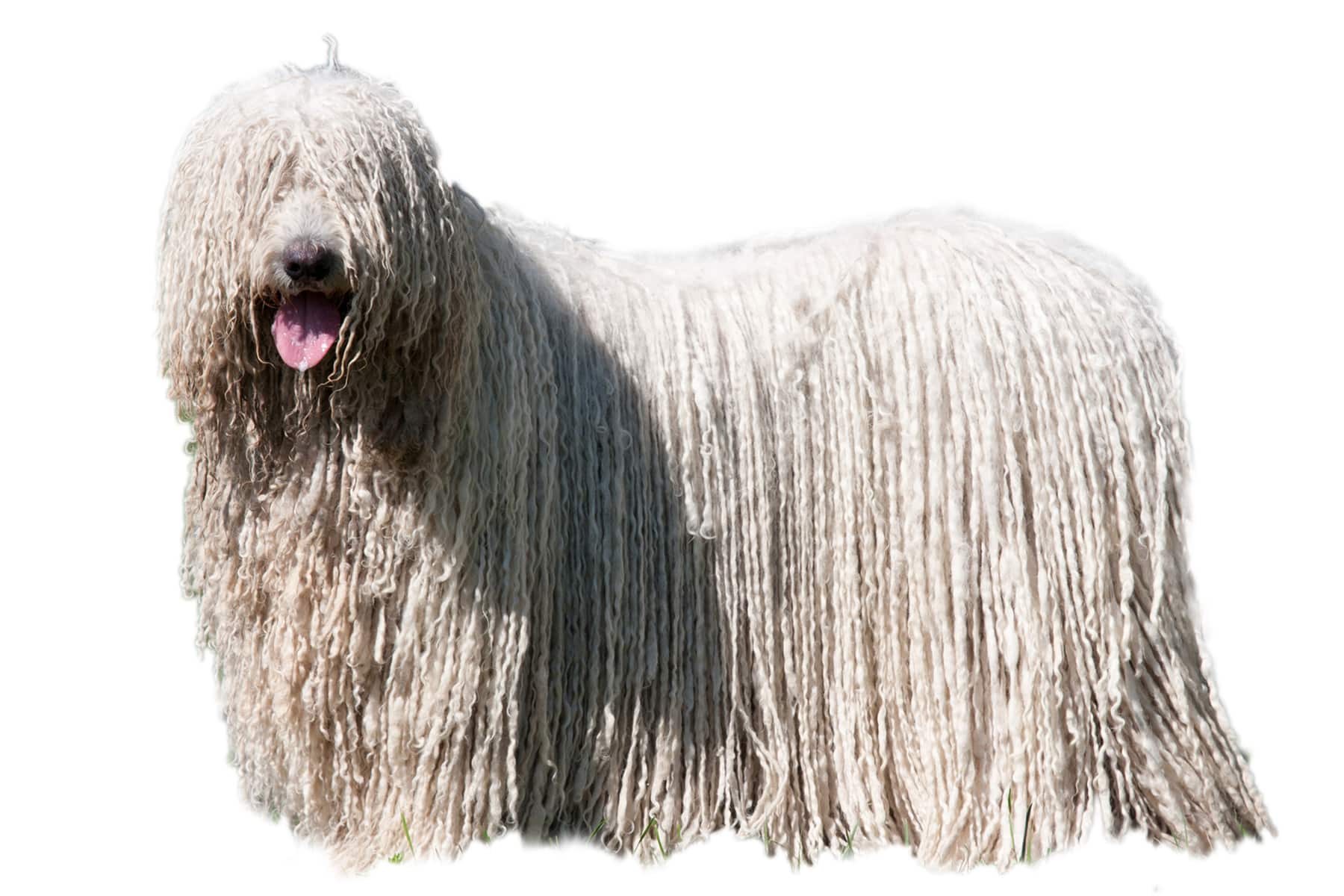
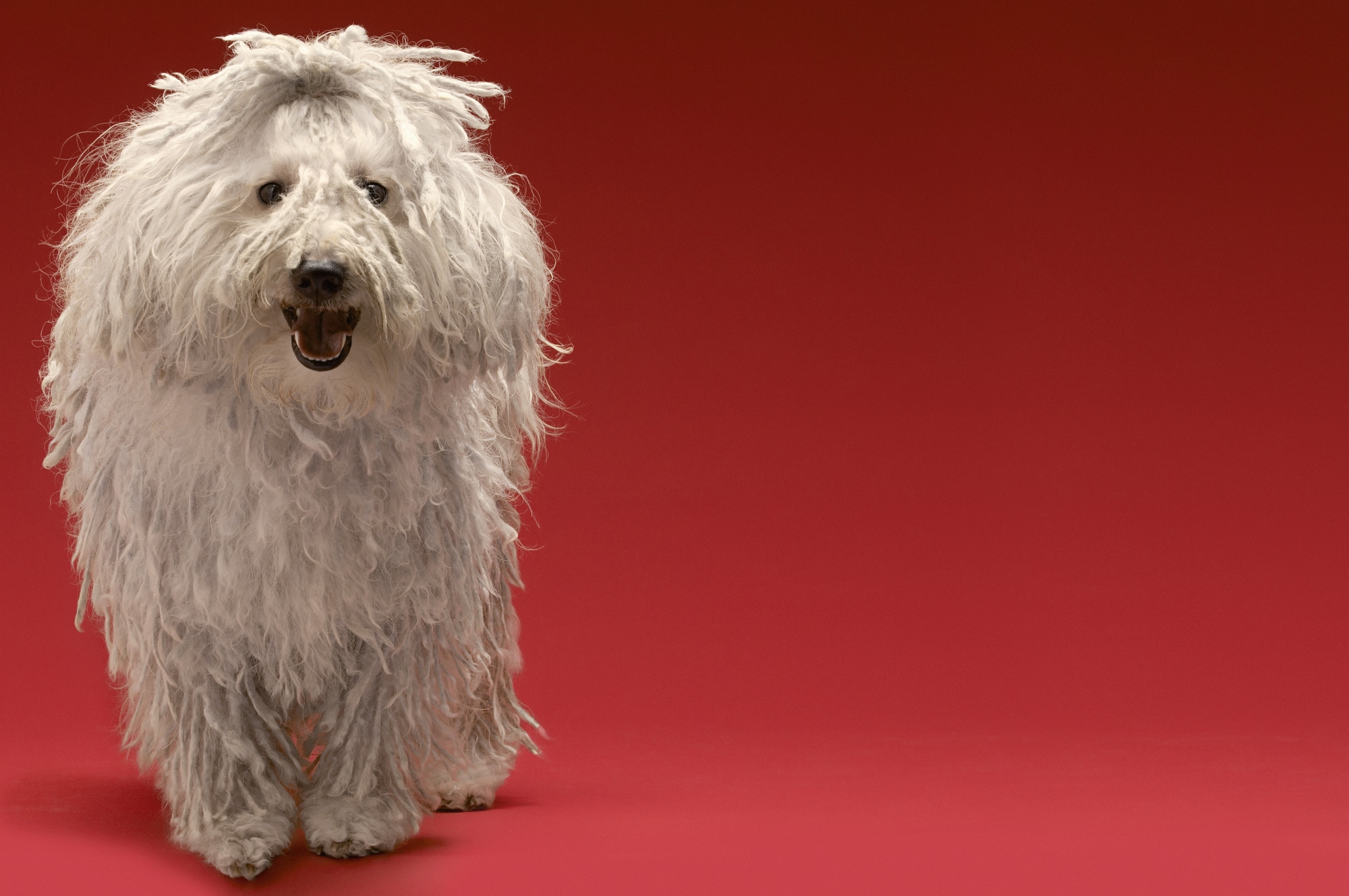
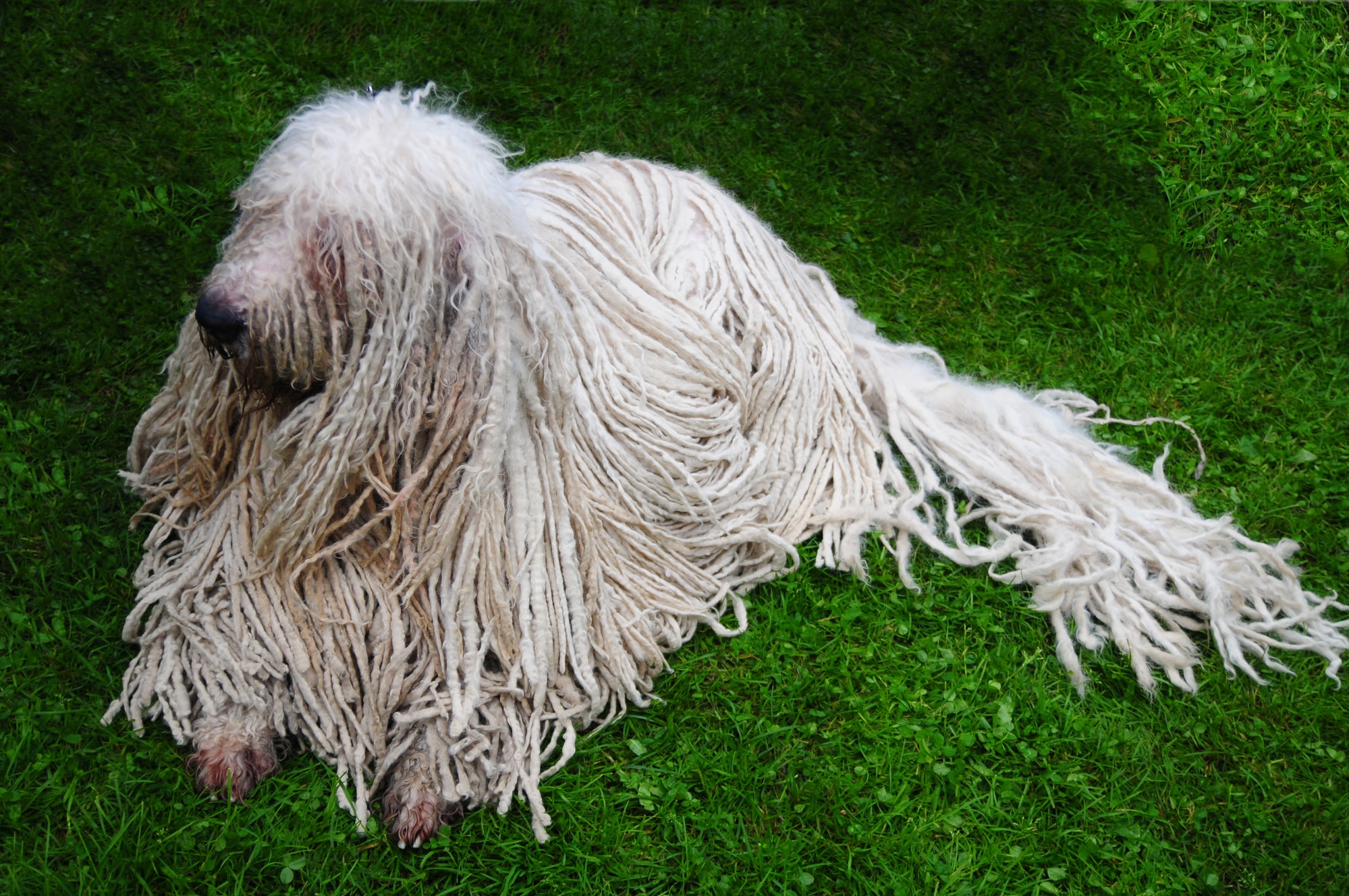
Temperament:
At first glance, he looks like a sheep, but no, he's a dog. And a Hungarian shepherd dog at that. The Komondor hides under its matted shaggy coat and is good for a few surprises.
Characteristics
The Komondor is recognized by the FCI and belongs to Group 1, which includes herding and driving dogs with the exception of mountain dogs. The most striking feature of the Komondor is undoubtedly its coat. How could it be otherwise, as it covers most of its body. At first glance, it is easy to confuse the front with the back.
The coat consists only partly of living hair. The shed hairs become matted with the still firmly rooted hairs and form shaggy tangles or cords. Incidentally, this affects the dog's entire body, not even eyes or ears are visible. This game of hide-and-seek makes it difficult to recognize the dog's intentions.
All Komondors look very uniform. The coat is white, but becomes darker in the course of life. It is then referred to as ivory-colored. There are only differences between the sexes. The males are on average a good 5 centimetres taller than the females. The dogs are fully grown relatively late, at around 18 to 24 months.
If the coat were to be cut off, a still large, well-muscled dog would be revealed. However, this should be avoided at all costs, as the coat is essential protection for the dog. It prevents injuries and bites from enemies. It is also adapted to the alternately very cold and extremely hot conditions of the Puszta, its home.
As a herding dog, the Komondor likes to be out and about at night. It has a pronounced territorial behavior. Its urge to move is rather low. It is content to patrol and maintain close contact with its herd. With a life expectancy of 12 years and often more, it remains loyal to its owners for a long time.
Another special feature of the Komondor is its independence. As a shepherd in the Puszta, it is often left to its own devices and has learned to assess dangers independently. This independence makes it difficult to train. As a rule, he only carries out tasks when he considers them useful. In encounters with other dogs, the Komondor takes command as a matter of course.
It is therefore hardly suitable for beginners; a Komondor needs an experienced owner. Dealing with strangers is also sometimes difficult, as the dog is suspicious of them. It is very fixated on its owner, to whom it is unconditionally loyal.
Coat care:
Shedding:
Energy level:
Trainability:
Children suitable:
The right food
The Komondor is a large dog. With a weight of 40 to 50 kilograms for females and 10 kilograms more for males, it has a good appetite. Although it will be expensive, you shouldn't skimp on food. Your dog's health depends to a large extent on his diet.
Therefore, when choosing food, make sure that it contains high-quality ingredients, is balanced and meets your dog's requirements. Age, size or weight, activity and health status play an important role here. You should follow the manufacturer's recommendations for the amount of food.
Treats should only be fed in moderation and deducted from the basic diet to avoid obesity.
Puppies can be fed 4-6 times a day. The number of meals should be gradually reduced to 2 per day until the dog is fully grown. A rest period should be observed after meals to reduce the risk of stomach torsion.
Fresh drinking water should be available at all times.
Because of the Komondor's peculiarity, there is something else you should be aware of. Changes in weight often remain hidden for a long time under the dense coat. You can counteract this by weighing him regularly. This way you can react quickly to any situation.
Health & Care
It will come as no surprise to you that caring for a Komondor is all about its coat. You should take good care of your four-legged friend from puppyhood onwards. Combing and bathing are taboo. This could damage the unmatted coat. Instead, the puppy's coat should initially be groomed by stroking.
The main purpose of stroking is to get the puppy used to grooming later on. The ears should be groomed in particular. The undercoat only begins to mat with the top coat from around one year of age. Large mats directly on the skin are harmful to the dog. You can carefully cut them into thumb-thick bundles. This will prevent the formation of eczema.
Even adult dogs should only be bathed in extreme emergencies and should not be combed. Instead of using a brush, use your fingers to remove twigs or other objects that have become caught in the coat. You can also use your hand to keep the hair in shape. Only trim around the excretory organs so that no feces or urine can get stuck in the fur.
Paws and ears require special attention. Matted areas between the pads can lead to injuries and must be removed. The hair that grows in your Komondor's ears should also be plucked off in small tufts so that they do not become clogged with earwax. If you are careful, your dog will not be in pain. And daily grooming strengthens the bond.
The coat of a Komondor can appear unkempt to some people. A Komondor is only groomed if it has the typical shaggy coat. It does not stink any more than other dogs. It needs its coat to stay healthy and feel comfortable. Another advantage is that hardly any hair falls out of the shaggy coat. The coat can be shortened as the dog gets older if it becomes weaker and the strain caused by its heavy weight becomes too great.
Suitable accessories
Your Komondor does not need expensive tools such as special dog brushes. As already mentioned, your fingers are perfectly adequate for grooming. To cut your growing dog's hair, you only need sharp scissors with rounded tips. To clean the ears, simply use your fingers, not cotton buds or similar.
The most important thing for the Komondor's well-being is a large plot of land where it can ideally move freely. Kennels are not suitable for the herding dog. Cities are also not a suitable home.
Remote farms or large, fenced-in gardens tend to be his territory. He finds toys relatively uninteresting, and being together with his herd is enough to keep him occupied. Otherwise, the Komondor naturally needs the same accessories as any other large dog.
These are collar or harness with lead, dog basket or dog mat as a retreat, water and food bowl, claw clippers, dog toothbrush and cream, transport box for transportation in the car and a first aid kit. Ask your vet what belongs in the first aid kit.
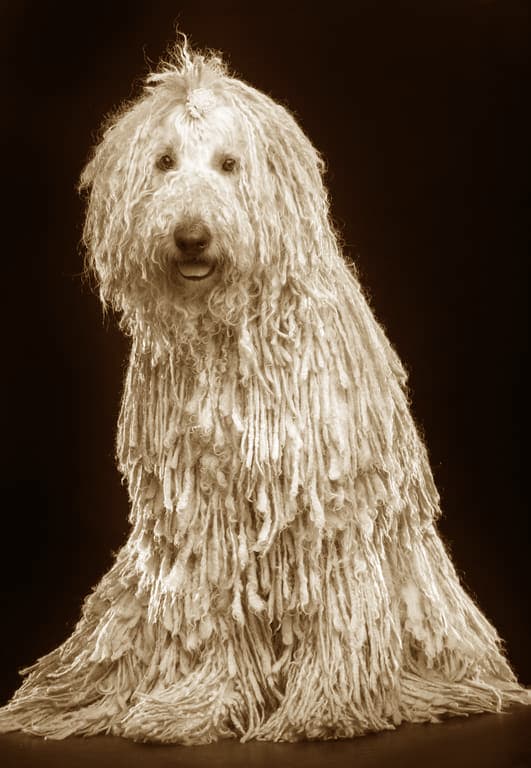
Origin & History
The history of the Komondor is exciting and mysterious. During excavations in Mesopotamia, clay tablets were found on which, among other things, large, shaggy dogs are depicted. Scholars do not agree on the interpretation of the corresponding inscription. However, it is possible that today's Komondor is descended from the Sumerian dogs that protected their herds of cattle. This would make the breed several thousand years old.
It is certain that the Komondor is a steppe dog. But experts argue about whether its origins lie in Mesopotamia, Tibet, Turkey or Ukraine. The same applies to its relationship with other traditional herding dog breeds. At some point, however, his path led him to Hungary. He may have come with the Cuman people, from whom his name could also be derived.
The first mention of a Hungarian shepherd dog dates back to the 16th century. The impressive appearance of the Komondor caused a sensation. In 1815, a drawing with a description was published for the first time in a specialist book.
The way the Komondor is bred today, it probably only evolved over the course of the last century. Researchers conclude this from the change in its coat, as the thin stripes were not described before the turn of the century. At that time, it was also kept at some European courts. However, this was more because of its unusual appearance and not because of its abilities as a guard dog.
Many of the myths that still surround the Komondor today are exaggerated. Its fur is said to have been used to surprise approaching predators, who mistook it for a sheep. The sudden barking of the supposed sheep is said to have confused the wolves. A wolf scare in sheep's clothing, so to speak. In most cases, however, the mere presence of dogs is enough to scare off predators. No matter what they look like.
In more recent times, the importance of the Komondor has increased again after the number of dogs had fallen sharply. Sometimes they are still used as herding dogs, e.g. in the USA. However, their actual profession has become that of guard and family dog.
